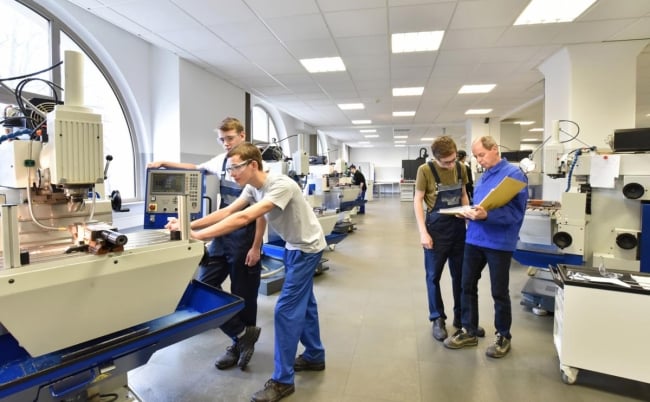You have /5 articles left.
Sign up for a free account or log in.

ISTOCK.COM/industryview
Amid mass layoffs, some workers are pursuing further education -- but not many.
A new working paper from the National Bureau of Economic Research found that for every 100 displaced workers, only one ends up enrolling at a public college.
"That just seems, objectively, quite small," said Judith Scott-Clayton, an associate professor of economics and education at Columbia University's Teachers College. "At the very least, there’s a lot of room for improvement here."
Scott-Clayton is one of the report's co-authors, along with Veronica Minaya, also of Teachers College, and Brendan Moore, of Stanford University.
The report used data from 2002 to 2009 in Ohio to see how mass layoffs impacted enrollment at two- and four-year public colleges. While the findings were a statistically significant positive relationship of about one percentage point, that isn't the best colleges could hope for, Scott-Clayton said.
These findings are even more relevant now, she said, as the COVID-19 pandemic has resulted in a national recession and mass unemployment.
"There’s an open question of, are we doing enough to make sure that displaced workers are aware of their options for returning to school when they lose their job?" she said.
Most of the workers who did enroll in public colleges worked in manufacturing prior to losing their jobs, the study found, which makes sense given that manufacturing workers may have a harder time finding employment without new skills, Scott-Clayton said.
Another concerning point is that only 29 percent of the workers who did enroll ended up graduating with a degree. Emily Bouck West, deputy executive director at Higher Learning Advocates, said colleges need to provide more support to students to bolster degree attainment.
"All types of students require comprehensive supports to succeed, especially during this time," she said via email. "That can mean making sure students have access to vital supports like child care, broadband and devices, food and housing assistance, and health care, including mental health. And these efforts can be the difference between completion and noncompletion, especially for students who are displaced workers."
Over all, the study shows that higher education needs to be more flexible, Bouck West said. Students and workers need more options, like credentials that can be completed more quickly.
"But it’s important that such programs are high-quality and not only lead to employment, but also stack with longer-term programs," she added.
Outreach is also a key factor. A study in Ohio found that sending letters with information about colleges and Pell Grant eligibility to people receiving unemployment insurance improved enrollment rates, Scott-Clayton said. Enrollment also seems to be better in states where it's easier to access unemployment insurance while enrolling in college.
Some fundamental aspects of higher education also need to be rethought to attract workers, said David Soo, chief of staff at Jobs for the Future.
Displaced workers need more information on the changing skills in their industries, along with information about how to prepare for multiple career paths, Soo said.
The delivery method for higher education could also use an update, he said.
"Some institutions and new providers are taking a user-centered design approach and developing programs that deliver education targeted to student needs. More programs should provide displaced workers the kinds of fast, flexible programs that can get them the skills they need -- and the ability to continually return and learn as skills needs change," Soo said via email. "In the same way Amazon determines that you have a toddler at home and targets you with relevant ads, displaced workers should have a plethora of training options to get them back to work from which to choose."
Better funding mechanisms that give students more options to finance their education, like income-share agreements, would also help, he said.
It's possible that workers are turning to for-profit institutions rather than public colleges, Scott-Clayton said. Because similar data used for this study aren't available for that sector, it's impossible to know for sure. But, she said, in areas of Ohio with more for-profit options, the enrollment numbers at public colleges were depressed.
Otherwise, it's likely that many of the displaced workers didn't enroll at any program.
Scott-Clayton emphasized that, especially now, it's important for policy makers to understand that people who need to go to college are not just the traditional 18-year-old leaving high school.
College might seem like an obvious choice to that population, but it's not for workers.
"When you lose a job, it really is a complex calculus. How do you know when it’s worthwhile to actually step away from the labor market and go back to school?" she said. "It is a more complicated decision that they’re making. They need guidance counselors, too."



